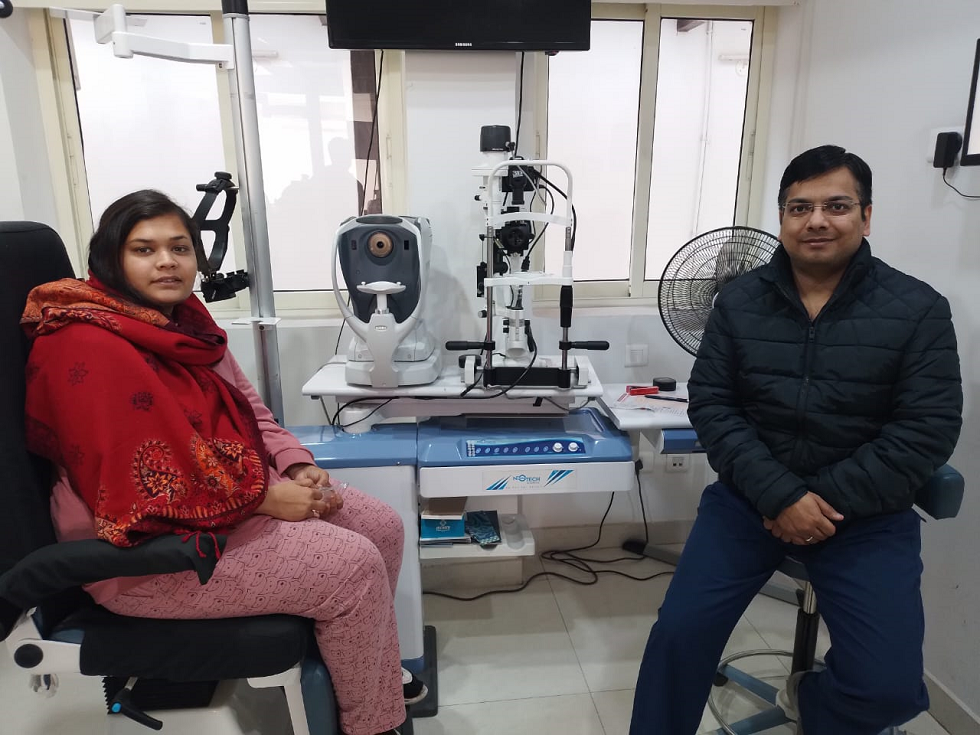Medical Retina
Anti VEGF injections – which are mainstay in the medical treatment of retinal ailment nowadays
The light-sensitive tissue lining of the back interior of the eye is called the retina.
It’s essential task includes transmitting light signals to brain that convert the signals in the image we see. Similarly, its proper functioning is vital to a person’s vision.
When injury or disease cause the damage to retina, vision loss happen. In these severe cases, treatments may not re-establish vision. Hence, doctors always put their all efforts to stop or slow down the disease’s progression in less severe cases. When diagnosed and treated early, most of the retinal diseases are manageable, and vision loss can be minimized.
An exclusive retinal examination involves dilation of your pupils, examination by the specialist and diagnostic testing if required. It may take about three hours for the complete examination. Dilation enlarges your pupils to allow the doctor a better view inside your eye. It is important to know that your vision will be blurred and you will be sensitive to light (photophobic) for several hours following this. Many of the procedures (treatments) that may be recommended to treat your condition can be performed by the doctor in the outpatient as well.
The common diseases affecting retina are Diabetic Retinopathy , ARMD which can be managed by medical intervention like Anti VEGF injections.
Diabetic retinopathy – is a common vascular retinal disease affecting about 40% of type 1 diabetics and 20% of type 2 diabetics. It affects blood vessels of the retina (the innermost layer of the eye), further causing retinal damage and impairment of vision.
This can lead to blurry or cloudy vision. In more advanced stages, Proliferative Diabetic Retinopathy (PDR) sets in, and new blood vessels form in the retina. These irregular blood vessels can cause damage by leaking blood into the vitreous. If untreated, PDR can potentially lead to retinal detachment.
AGE RELATED MACULAR DEGENERATION (ARMD)- Your ophthalmologist may treat your wet AMD or other disease of the retina with a drug called anti-VEGF. Anti-VEGF treatment improves vision in about one third (1 out of 3) people who take it. For a vast majority (9 out of 10), it at least stabilizes vision.
Anti-VEGF Treatments
What is Vascular Endothelial Growth Factor?
Vascular endothelial growth factor (VEGF) is a protein produced by cells in your body. VEGF produces new blood vessels when your body needs them.
Why Do You Want to Stop VEGF From Working?
Sometimes cells can produce too much VEGF. When this happens, abnormal blood vessels can grow in your eye. These abnormal blood vessels damage your eye and harm your vision. This can lead to low vision or blindness.
What Conditions Are Treated with Anti-VEGF Medicine?
Anti-VEGF medicine blocks VEGF, slowing the growth of blood vessels in the eye. This slows or stops damage from the abnormal blood vessels and slows down vision loss. Sometimes it can even improve vision.
Ophthalmologists use anti-VEGF medicines to treat the following eye problems:
– Wet age-related macular degeneration (AMD)
– Swelling of the retina, called macular edema
– Diabetic retinopathy
– Retinal vein occlusion
What are the Differences Between the Kinds of Anti-VEGF Treatments?
There are three main anti-VEGF medicines:
– Avastin
– Lucentis
– Eylea
Ophthalmologists generally consider all three to be safe and effective treatments for retinal disease. One study that compared the effectiveness of Lucentis and Avastin found them both effective for treating Wet AMD. The differences among Avastin, Lucentis and Eylea have to do with cost, packaging, and possibly with some packaging-associated risk. A number of new anti-VEGF drugs are nearing approval, and patients may have more treatment options in coming years.
How Anti-VEGF Treatment Is Given
This is what you can expect during the treatment:
– Your ophthalmologist will clean your eye to prevent infection.
– The eye is numbed to reduce pain.
– A small device may be placed on your eye to keep your eyelids out of the way.
– Your ophthalmologist injects the drug through the white part of your eye using a very thin needle.
– The injection only takes a few seconds. You usually do not see the needle itself.
Your ophthalmologist will decide how many treatments you need. You may need other types of treatment along with anti-VEGF treatment.






